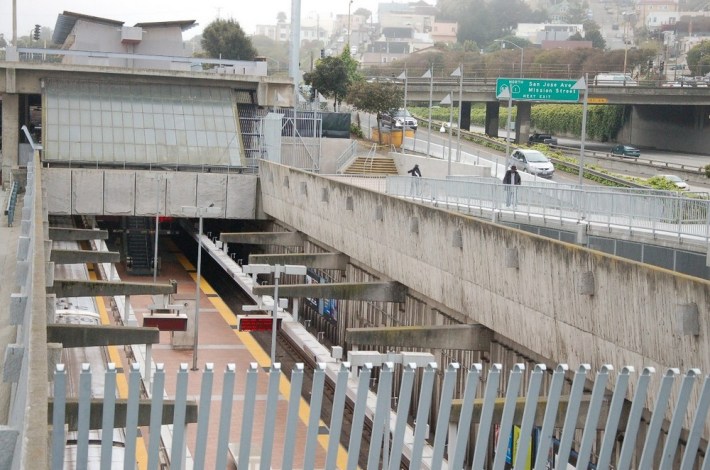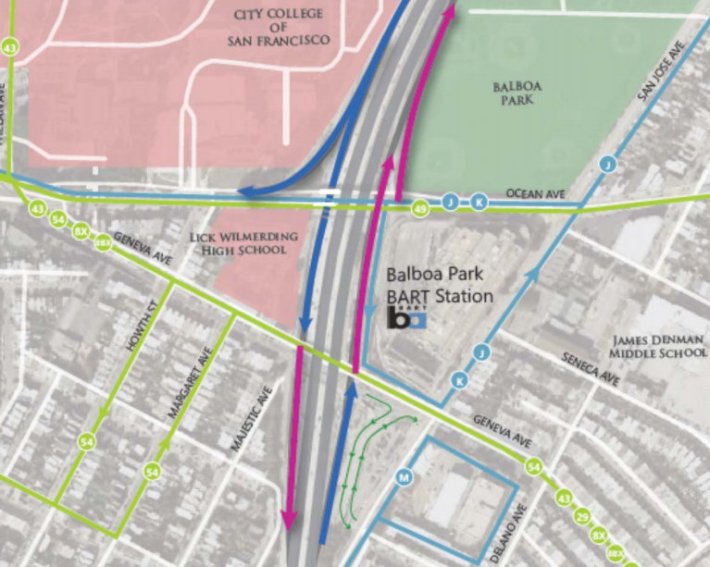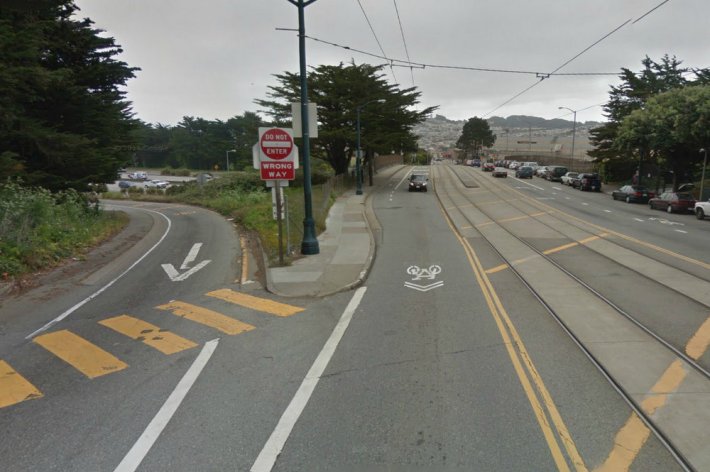Balboa Park may be a major transit hub for BART and Muni, but it's hard to tell as you approach the station, which is surrounded by dangerous roads swarming with car traffic moving to and from six nearby freeway ramps. The design of the area around the station -- not to mention the 24,000 people who use it daily -- feels like an afterthought to a freeway exit.
The SF County Transportation Authority is considering options to remove some of the "redundant" freeway ramps to reduce the number of points where pedestrians and cars mix, while also simplifying traffic patterns and making the pedestrian environment less hostile. The agency has embarked on a study to explore how certain ramp removals or re-alignments would affect the area, and fielded input at a community meeting this week.
"If you change the circulation patterns around the station, you might shake loose a solution that would allow us to improve the current conflicts that are happening at certain hot spots around the station," said SFCTA planner Chester Fung. "There's no silver bullet solution."
Robert Muehlbauer, chair of the Balboa Park Community Advisory Committee, said he wants "to make sure that we don't just design for cars, that we design for people, too."
"Sometimes, the best design for cars excludes people, and sometimes the best design for people excludes cars. Bicycles have to fit in there, too."
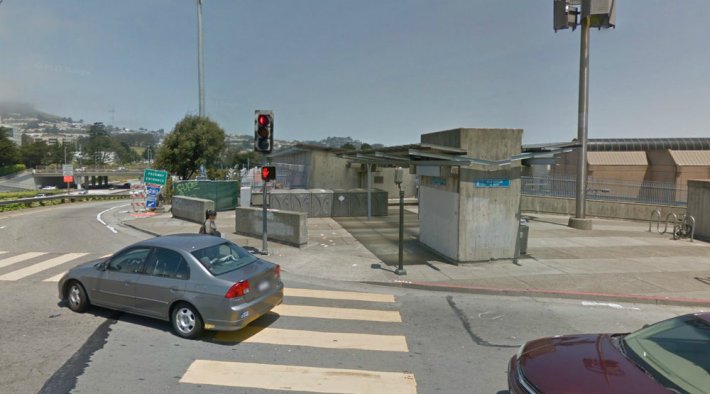
The streets surrounding Balboa Park Station see about 1,000 pedestrians and 2,000 cars per hour during rush hours, according the SFCTA. The station is bordered by the 280 freeway on its west side, and Ocean and Geneva on its north and south sides, respectively, which both carry numerous Muni lines and people walking to City College's main campus and nearby neighborhoods. Ocean has a northbound on-ramp and a southbound off-ramp, which curves as an off-shoot that allows drivers to merge onto westbound Ocean at a fast clip through a pedestrian crosswalk in front of City College's main campus.
Four people were injured by drivers while walking near the off-ramp on Ocean between 2005 and 2010, according to a map of pedestrian injuries from the Department of Public Health. Meanwhile, Ocean's uphill, westbound bicycle lane suddenly ends at the off-ramp, leaving bicycle commuters to take their lives in their hands as they merge with high-speed motor traffic on both sides.
That off-ramp was "flagged" by planners for the dangers caused by high-speed motor traffic, and would be removed or redesigned under the options proposed by the SFCTA, said Fung.

Planners have laid out two overall options [PDF] for ramp removals. The first, Alternative 1, would remove two of four ramp touchdowns on Geneva while retaining on- and off-ramp pairs on both Ocean and Geneva Avenues. The high-speed ramp on Ocean would also be redesigned as straight-facing off-ramp with a perpendicular touchdown, where a traffic signal would also be installed. A variation on this option ("Alternative 1B") would include new one-way "frontage roads" on either side of 280, between Ocean and Geneva, raised over the space where freeway ramps currently run. Fung said those additions could provide more convenient pick-up and drop-off zones (a.k.a. "kiss-and-ride" zones), which are needed because many drivers don't use the existing ones, instead dropping people off on off-ramps, which can be dangerous and delay car traffic.
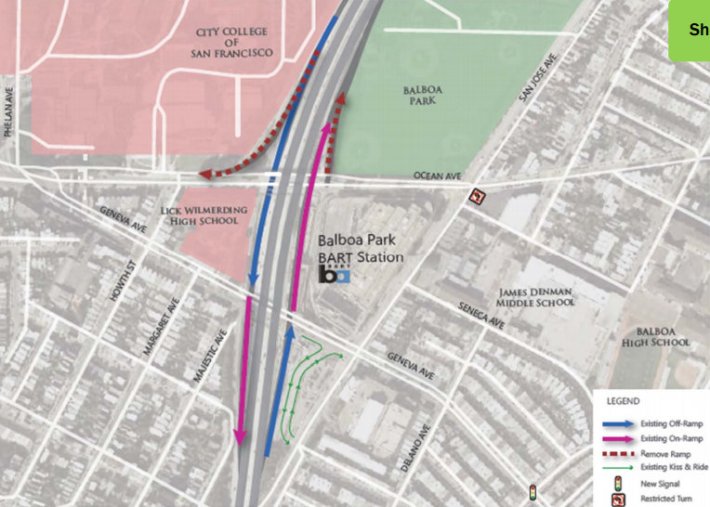
The second option, Alternative 2, would remove all ramps from Ocean and retain all four ramps on Geneva. That option seemed to be the least favored by attendees at the community meeting. While it would drastically reduce car traffic on Ocean, residents feared problems would be exacerbated on Geneva, including delays to the four Muni lines that use it. Fung said the SFMTA has deemed it impractical to move all of Geneva's transit lines on to Ocean.
Overall, the alternative most favored by attendees seemed to be Alternative 1, with or without the additional side roads, which could make the project significantly more expensive, said Fung. Other plans for the Balboa Park area have called for a deck constructed over 280 between Ocean and Geneva to provide more space for public space and buildings to bridge the freeway divide, but Fung said the high cost of that project means it probably won't be implemented in the near future.
The SFMTA and BART have made some improvements in recent years to make the street more accessible by foot and bike, including a new walkway connecting to Ocean and bike lanes which replaced car parking lanes on the Ocean overpass.
"I want to make sure we don't lose the opportunity to create a sense of place," said Muehlbauer. "We've got to create more of a focus so that people feel comfortable walking to transit rather than having an engineered arterial corridor where pedestrians are completely intimidated."
The SFCTA plans to hold another community workshop in January and complete an implementation plan for ramp removals in winter 2014.
